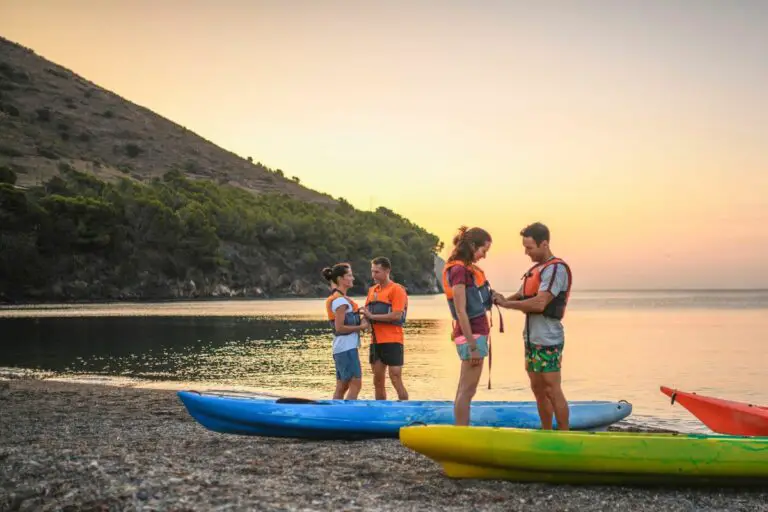Kayaking with Alligators – A Guide To Stay Safe
Wildlife viewing is one of the most exciting aspects of kayaking. Kayaking with alligators is a great and common example of this kind of experience. While they are fearsome creatures, you can still safely paddle near them as long as you’re careful and respectful of their territory.
So, can you kayak with alligators? You can kayak with alligators. There are many gator-friendly locations where you can book tours to kayak with alligators safely. The most important thing is to follow safety measures, maintain your distance, and remember not to feed the alligators because that makes them dangerous.
Keep reading to learn more about how alligators behave, how to tell when they’re aggressive, and what to do if you encounter an alligator.
Table of Contents
Kayaking With Alligators – A Guide

Alligators are mostly found in the Southern areas of the United States; this includes states like Louisiana, Florida, Georgia, Alabama, Mississippi, South and North Carolina, Virginia, Eastern Texas, and the southern tip of Oklahoma.
Generally, kayaking with alligators in any of these states can be a very safe activity. Most of the time, the alligators you pass by want nothing to do with you. So, maintaining your distance will lower any chance of an encounter.
Alligators do not normally think of humans as food sources. However, if an alligator gets fed by humans, it will start to associate humans with meals. That’s when alligators can be a real danger to kayakers.
While alligators can be reserved and docile, they’re still very dangerous predators. Having a basic understanding of their behavior and taking precautions while in their natural habitat is still very crucial to remain safe.
How Do Alligators Typically Behave?

Alligators are a reserved kind of predator. They will remain submerged under the surface for hours – with only their snout resurfacing periodically for air – waiting for prey to come near. They tend to be reclusive; some might even view them as lazy or docile.
When it comes to their diet, full-grown alligators typically feed on fish, snakes, turtles, small mammals, and birds. A mentioned before, they do not consider human flesh a food source and won’t seek it out.
Alligators are cold-blooded, which is why they are the most active between dusk and dawn. However, they don’t move much during the daytime. They usually prefer to spend the daytime hanging out near the shore and basking in the sun.
If you’re on a wider river, it’s common to see several alligators on the shore. However, if you’re on narrower streams, alligators are more likely to slip back into the water and disappear if they recognize your kayak approaching.
During the spring, when the weather is warmer, and the temperatures are high, alligators will be more likely to display some aggressive behavior. That’s when the chances of an alligator attacking a kayaker tend to significantly increase.
There are two main reasons why their behavior changes during that time:
- Mating Season – April is the start of the alligator mating season, which normally lasts up to May or June. During that time, male alligators become more active, aggressive, and highly territorial.
- Mother Alligators – Female alligators build their nest in sheltered areas near the water and then guard it throughout the incubation period and for two years after the eggs hatch. Mother alligators will become aggressive if they see anyone attempting to approach or handle their eggs or babies. They will not hesitate to attack if they sense a threat to their young.
Can You Go Kayak Fishing Near Alligators?

You can go fishing near alligators. However, you might face some problems with alligators showing up as soon as you start landing your fish.
Reeling the fish too fast can cause too much noise, which attracts alligators. There’s also the issue of alligators stealing your catch if they have a chance.
To overcome these problems, you can keep your rod tip pointed close to the water and try to reel in your fish slowly so you wouldn’t make any commotion that will make the alligators aware that you’re landing fish.
You also need to be very careful when releasing a fish back into the water. Make sure to do it as quickly as possible, as a hungry alligator could be waiting below the surface of the water, ready to snatch it out of your hand.
Now let’s look at the precautions you need to take to remain safe while kayaking near alligators.
Safety Tips for Kayaking Near Alligators
- Don’t kayak near gator territory
If you want to completely eliminate the risk of encounters with alligators, just stick to paddling locations where there are no populations of alligators. Most of the U.S. isn’t inhabited by alligators, so you’ll still have a lot of beautiful kayaking destinations to choose from.
- Never feed alligators
This is the most important thing to remember. There’s a good reason why it is actually illegal.
As mentioned before, alligators will start associating humans who feed them with meals. The main problem here is that it could lead to deadly predators like alligators, unafraid of approaching humans.
Most of the reports of aggressive alligator encounters and attacks on kayakers have been the result of a kayaker trying to feed a gator.
- Don’t make them feel cornered
A party of multiple kayakers might resemble a hunting party in the eyes of the alligators lying on the banks of the lake or river where you’re paddling.
It’s good to have at least 15-20 feet between each of your kayaks and to travel in a straight line.
Avoid having multiple kayaks pointing at or approaching a group of gators from multiple angles at the same time. This could make them feel as if they are being cornered or under some kind of threat which will quickly lead them to become aggressive.
- Remain at a respectful distance
Generally, try to keep your kayak at least 20 yards away from the nearest gator you can see. This will lower the risk of any gators feeling threatened by your presence.
You need to respect the gator’s territory and remember that this is their home, and you’re just vesting.
- Don’t bring your pet along
Some of the reports of alligator attacks on kayaks have been directly linked to the presence of a pet on board the kayak. That is because pets emit a different odor than humans, and it appears that this odor is very attractive to alligators.
If you want to learn more about safely kayaking with a pet, you can check my post on how to kayak with a dog here.
- Don’t paddle near gator territory during their mating season
Almost all animals are more aggressive and protective of their territory during mating season. So, it’s always best to avoid them during this time of the year.
When it comes to American alligators, mating season usually begins in April and can take up to May or June. If you’re paddling in any location other than America, it’s recommended to do your research about alligator mating season for the region you are in.
- Look out for any sign that the alligator is agitated
Agitated alligators will make a warning sound when they feel threatened. It is more common among females that are protecting their nests. This sound is most accurately described as a hiss.
- Take a whistle or an air horn with you
It’s recommended to carry an item that will be able to make a loud noise to scare off an alligator if it’s getting too close to your kayak.
If you don’t have a whistle or an air horn, you can slap the water with your paddle and use your own voice to make loud noises.
Do Alligators Attack Kayaks?
Yes, alligators do attack kayaks. However, it’s a very rare occurrence, and it’s almost never unprovoked. Alligators are likely to attack kayaks if they’re feeling agitated or threatened.
If you ignore all the safety precautions and fail to recognize the warning signs that indicate that an alligator is angry, you’ll definitely be putting yourself in danger.
What Are the Warning Signs You Must Watch Out for?
When an alligator feels threatened, their first action to defend themselves would be going back into the water. Unfortunately, in some cases, they will not retreat, and instead, they’ll show signs of aggression.
It’s important to be able to recognize these warning signs when you come across an alligator.
Here are some examples of alligator body language signs that you shouldn’t ignore:
- Emitting a sound like hissing or growling
- Opening their mouth wide and snapping their jaws
- Wagging their tail
- Turning their head or body and swimming toward you
- Puffing up and down in the water. You will notice that their belly is getting larger, and their back will be rising up out of the water.
If you happen to notice any of these signs when approaching an alligator, take it as a warning and immediately retreat.’
Are There Gator-Proof Kayaks?
There are no kayaks specifically designed specifically to be “gator-proof.”
If you’re going to kayak in alligator territory, it’s recommended to do so in a kayak made of durable materials and avoid inflatable kayaks because alligators have strong jaws that could potentially bite through most solid materials.
Looking for some kayak recommendations? Check out my guide for the best fishing kayaks here.
Another thing to keep in mind when choosing a kayak is that there is no specific color that will deter or attract alligators to you. So, the color of the kayak doesn’t make a difference.
What to Do If an Alligator Approaches Your Kayak?
The most important thing is not to panic and try to get back to shore.
Paddle smoothly away as quickly as you can, but try to keep your strokes smooth and not frantic. It’s a good idea to turn around and paddle backward to keep an eye on the alligator in case it’s following you. You can also make some noise to scare them away using a whistle or an air horn.
Remember that your kayak is the safest place for you during an alligator encounter, so try your best to remain inside or on top of it.
If an alligator tries to lunge at the kayak to bite you, use your paddle as a weapon and swing it while aiming for their snout.
Sometimes the alligator might become provoked and agitated, so it will try to knock you out of the kayak. If that happens, you need to get yourself back in the kayak as quickly as possible.
It’s challenging to re-enter the kayak after getting knocked into the water, especially with the threat of an alligator nearby, but with enough practice, you’ll be able to do it quickly enough. Make sure to practice kayak re-entry in non-emergency situations as much as possible.
Where Can You Kayak with Alligators?
Now that you have all this information about remaining safe while kayaking with alligators, you might actually be interested in taking a trip in alligator territory. So, I’ve compiled a list of popular kayaking locations with populations of alligators.
The Best 6 Gator-Friendly Kayaking Locations to Check Out
Everglades National Park

It’s a 1.5-million-acre preserve that is home to American alligators and the rare and endangered American crocodiles.
It’s the largest subtropical wilderness in the United States; it’s definitely a gator-friendly spot if you plan to get out on the water in your kayak.
Congaree National Park
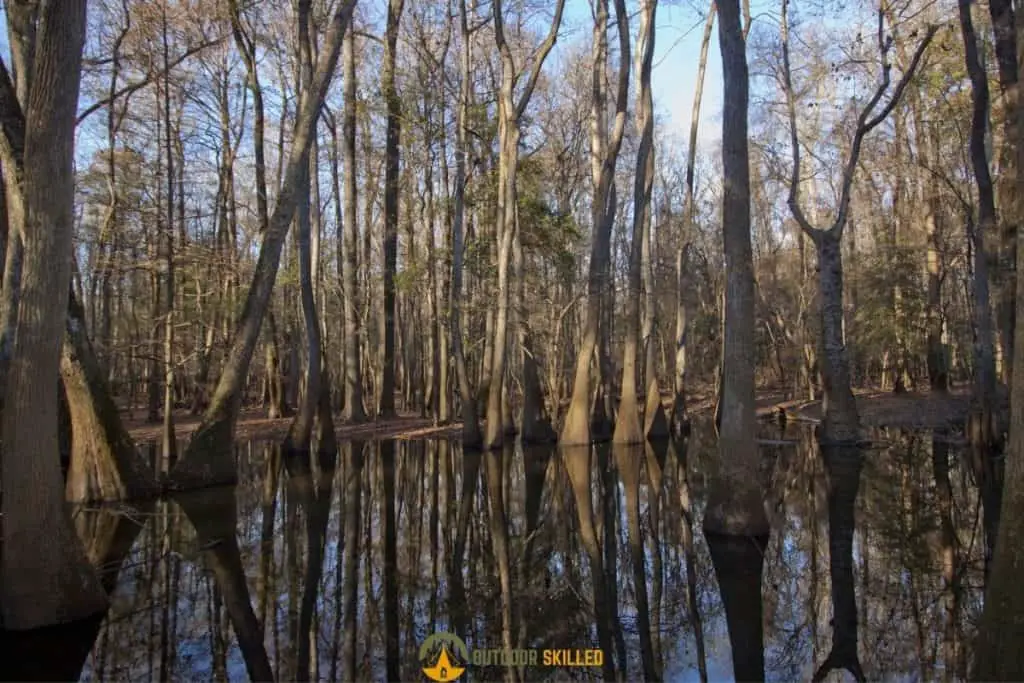
It’s one of the United States’ less popular national parks, located in South Carolina and very much in alligator territory.
Neches River
It’s located in West Texas, which may seem like an unlikely spot for American alligators and kayaking. However, it is still within alligator territory, and it can be a great experience to paddle through trails in the piney woods of Texas.
Wakulla River Paddling Trail

It’s a 10-mile trail located in North Florida. It’s known to be filled with wildlife, like manatees, wading birds, alligators, turtles, and plenty of fish.
Atchafalaya Basin Swamp

It’s located in New Orleans and attracts a lot of visitors every year for many reasons other than kayaking. It’s known to be a habitat for American alligators.
Potano Paddling Trail

It’s located near Gainesville. It provides a circumnavigation option and a more technical paddle of Prairie Creek.
If you are going kayak fishing, make sure to get your fishing license first. Getting a fishing license is easy, and it will cost you much less than the fine you’re going to pay if you fish without a license. You can find out where and how to get your fishing license in every state here.
Related Questions
What Are the Best Gator-Free Locations to Kayak?
Some of the best gator-free locations to kayak include the Colorado River, Lake Tahoe, Crater Lake, Snake River, and Acadia National Park. There are no reports of alligator sightings or encounters in any of these locations, so it’s perfectly safe to go on a kayak trip there with your family and pets.
Are Alligator Jaws Strong Enough to Damage a Kayak?
Alligator jaws are strong enough to damage a kayak as they exert up to 4,000 pounds of pressure per square inch. Alligators also have a hinge at the back of their lower jaws, which allows them to open their mouth wide and snap viciously at their target.
Can You Swim with Alligators?
You can not swim with alligators. That is because splashing water around while swimming will alert the alligators to your presence, and they might mistake you for injured prey that they can easily attack. If you swim near a female alligator, it will also perceive you as a threat to her eggs and attack you in defense.
What’s The Difference Between Alligators and Crocodiles?
The main difference between alligators and crocodiles is the shape of their snout. Alligators have a wider rounded snout, while crocodiles have a long pointed snout. Another difference is their behavior. Crocodiles can be more aggressive than alligators and also more dangerous.
Do Crocodiles Attack Kayaks?
Crocodiles do attack kayaks because they are known for being very aggressive. If you’re going to kayak in crocodile territory, it’s important to follow safety measures and avoid being too close to them in the water. You also need to be prepared in case they approach your kayak or try to attack you.
Kayak your way to Freedom
- On a budget? Check out the best fishing kayaks under $500 here and the best Fishing Kayaks under $1,000 here. Or Check the best Cheap Kayaks here.
- Going fishing? Here are the best Ocean fishing kayaks, and here are the best River Fishing Kayaks.
- You can also find the best Fly Fishing Kayaks here and the best Bass Fishing Boats here.
- A bit experienced? Check out the best modular kayaks here and the best tandem fishing kayaks here.
- Looking for something special? Check out my favorite Ducky kayaks here.
- Navigate your way with these awesome and beginner-friendly Kayak compasses.
- Going Hunting? These Duck hunting kayaks will give you an unfair advantage!
- Have a need for speed? These motorized kayaks will get you moving.
- Protect yourself from the sun with these Kayak shades, and make your kayak more comfortable with these Kayak seats.
- Keep your feet dry and warm with these superb Kayaking shoes.
- Going Kayaking in cold water? Stay warm with these Kayaking gloves.
- Paddle Less, Fish More with the Best Kayak Motors
- Looking to get a trolling motor on your kayak? Check out the best kayak trolling motor mounts here.
Helpful Resources
Alligator Attacks on Humans in the United States – Ricky L.LangleyMD, MPH
A Preliminary Analysis of Worldwide Crocodilian Attacks – Brandon Sideleau and Adam Britton
If you like this article, please share it or pin it, you can find the share buttons below. We will really appreciate it ❤️

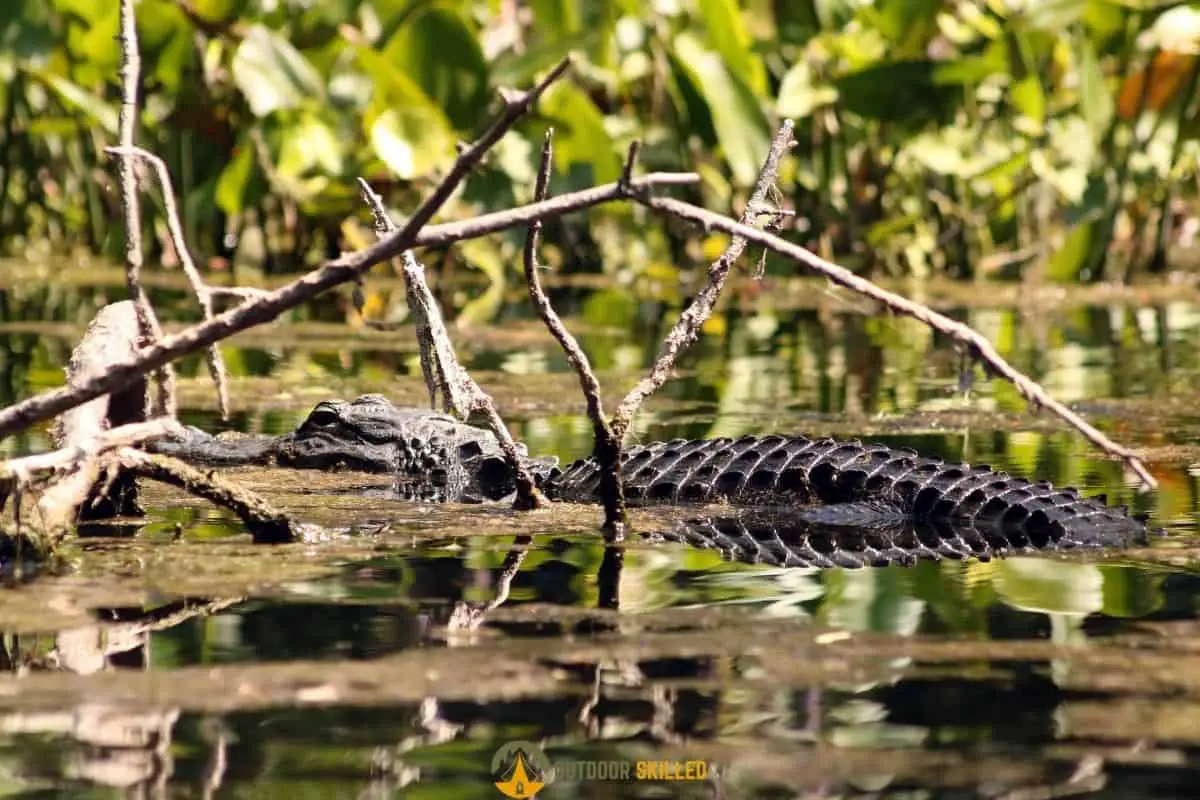

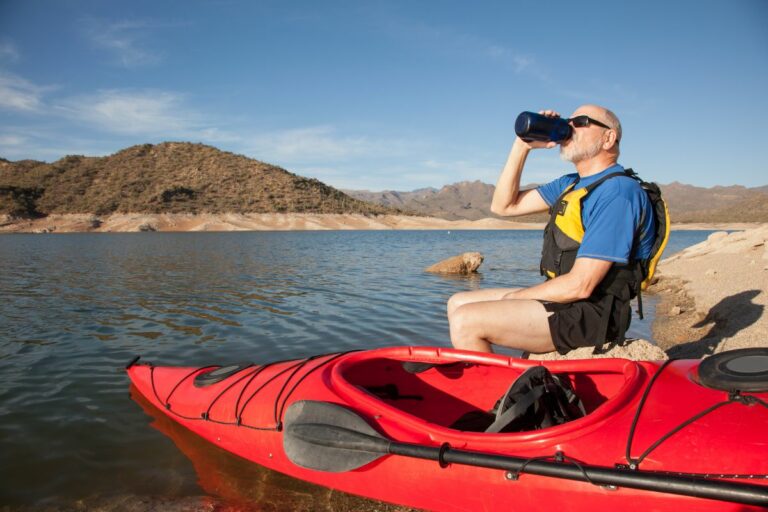
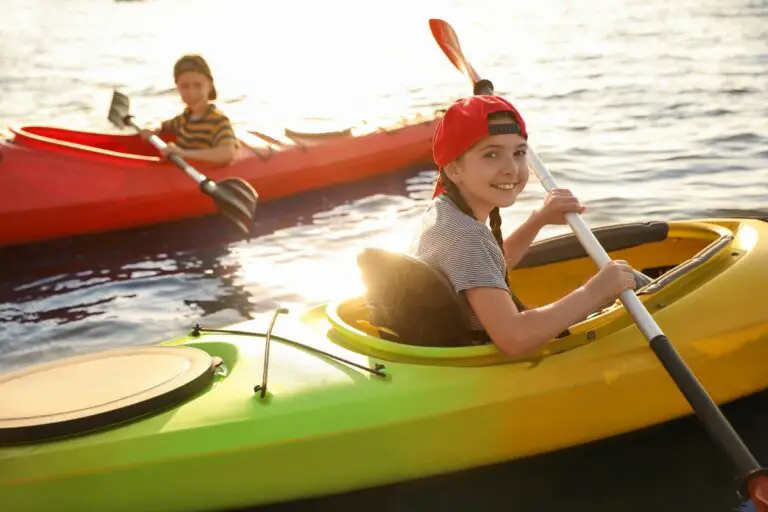

![Can You Sink A Kayak? [Should You Worry?]](https://outdoorskilled.com/wp-content/uploads/2021/11/sinking-kayaks-768x512.jpg)
